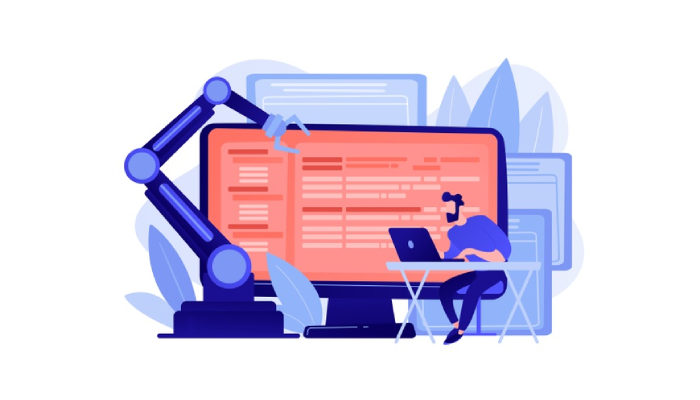Page Experience: Google’s Major New Ranking Factor for 2021
Google has announced that a new raking signal – Page Experience – will become a major part of their core ranking algorithm starting May 2021. It is a strategy to improve the quality of content in Google search index pages for a more meaningful user experience. The new page experience is a set of signals that will determine the user experience of web page interaction for Google search indexing.
The new indexing signal will look things beyond information value to determine search engine ranking. The Page Experience algorithm update will also enforce webmasters to clear all the new metrics set by Google for great website user experience.
Google has made everything very clear before rolling out the actual update so that you can adjust your websites as per defined search engine metrics so that it won’t affect your ranking and web traffic. So, what does this means for future search, and how can you prepare for it?
About Google Page Experience
Here’s what Google says officially about it: (https://developers.google.com/search/blog/2020/05/evaluating-page-experience)
“The page experience signal measures aspects of how users perceive the experience of interacting with a web page. Optimizing for these factors makes the web more delightful for users across all web browsers and surfaces, and helps sites evolve towards user expectations on mobile. We believe this will contribute to business success on the web as users grow more engaged and can transact with less friction.”
The new page experience signals include both new and existing metrics:
- Core Web Vitals
- Loading
- Interactivity
- Visual Stability
- Mobile Friendly
- Safe Browsing
- HTTPS
- No Intrusive Interstitials
These signals will impact rankings in their own ways. Google’s new algorithm update will focus more on the usefulness and relevancy of your website. In addition to existing Search signals – mobile-friendliness, safe-browsing, HTTPS, and No Intrusive Interstitials – the new Core Web Vitals will determine real-world user experience for performance, interactivity, and usability of the web page. It will ensure that users will find content with more quality and authority in search results. It can change the whole game of SEO strategy to secure a higher rank in search results.
Here’s a detailed overview of how these signals can affect your website performance and ranking.
Google’s Core Web Vitals
It is the biggest change that Google will bring with a new algorithm update in May 2021. Google’s Core Web Vitals are a set of metrics that will judge each web page on the internet for its user experience and usability. They will penalize the pages with the worst web usability based on parameters such as loading time, interactivity, and visible stability. In some ways, it is like the 2018 Google algorithm update that had penalized websites with poor page loading time.
Core Web Vitals include three core metrics:
- Largest Contentful Paint (LCP) – It measures the site loading performance and marks the point in the page load timeline when a web page is loaded on the user’s device. You should target an LCP score lesser than 2.5 seconds. For this, you can optimize your server and route your web users to nearby CDNs for great loading performance.
- First Input Delay (FID) – It measures the levels of user interactivity based on page responsiveness that should be under 100ms. For this, you can reduce the JavaScript execution time of your web pages to improve your page responsiveness.
- Cumulative Layout Shift (CLS) – It measures the visual stability of a web page to determine the unexpected layout shift of the page content. A web owner should target a CLS score below 0.1 for a great user experience. You can add dimensions to your images, ads, iframes, and embeds and avoid fixed placeholders to reduce CLS score.
Mobile-Friendliness
Google’s mobile-friendly update came in February 2015 that has established mobile compatibility of web pages as an important ranking signal. It is an evaluation that determines how well a website performs on mobile devices for a great user experience. It focuses on mobile-first indexing to increase the number of mobile-friendly websites in search results. You can check your website’s mobile-friendliness index and compatibility test in real-time at Google here.

Safe Browsing
It is a Google initiative that ensures that a web page doesn’t include any malicious content such as malware, deceptive pages, harmful downloads, and uncommon downloads for security issues. Safe browsing detects and notifies users about security issues available on a web page. It displays a “This site may harm your computer” notification and discourages users to visit a web page.
Webmasters can use Google Search Console to analyze their websites for security issues and resolve them. You will receive notifications, recommendations, and guidance for each type of security issues in the report to fix them as soon as possible to maintain search engine ranking.
HTTPS
Google has started penalizing non-secure websites as it made HTTPS a non-negotiable ranking signal when it comes to Google indexing. It became a small ranking factor starting 2014, and in 2016 update, Google made it mandatory for webmasters to transit from HTTP to HTTPS for secure browsing.
HTTPS stands for Hypertext Transfer Protocol Secure and it may become a more important factor in the upcoming Page Experience Algorithm Update. If you don’t have an SSL certificate installed on your website for HTTPS for an added layer of security encryption, make sure to acquire in before May 2021 update.
Intrusive Interstitial Guidelines
It is a set of guidelines that ensures that the content is easily accessible to the users when they click through to a website from search results. A new algorithm update in 2017 has started penalizing websites that use intrusive interstitials when a user visits a website on mobile devices. It prevents websites to rank higher in search results that prohibit a user from accessing the content using intrusive interstitials. Some examples of intrusive interstitials are popups or ads that block part of the content on a landing page that can affect a user’s interaction and experience on a web page.
What will the Page Experience May 2021 Update Mean for Search?
Since Google focuses on more valuable information and content on the internet for a great user experience, they will roll out Core Web Vital metric with existing metrics as ranking signals. The new update will enforce webmasters meet all of the page experience criteria on different indicators to secure higher ranking in search results. This reason is enough for webmasters to pay attention to the upcoming Page Experience Algorithm Update in May 2021.
Do SEO and content still matter after this update?
Yes, they do. The Page Experience makes visual stability and usability of your website an important part of SEO strategy along with the quality content. Good content will always be an essential factor in deciding search ranking. The new ranking signals will ensure webmasters to clear all the metrics set by Google for better ranking. As per Google,
“While all of the components of page experience are important, we will prioritize pages with the best information overall, even if some aspects of page experience are subpar. A good page experience doesn’t override having great, relevant content. However, in cases where there are multiple pages that have similar content, page experience becomes much more important for visibility in Search.”
It makes it very clear that you still need to focus on your earlier SEO efforts while incorporating new ranking signals in your strategy. To optimize your page experience, you can work on your page loading time, reduce 400 errors, analyze your design, and compare your experience to your competitors. It will help you make your content becomes much more important and acceptable for search visibility.
Now that you know what changes Google’s upcoming page experience algorithm will bring in May 2021, we recommend you analyze your website on each indicator mentioned above in your next action plan. There is not much to worry about; the simple aim of this update is to rank user-friendly sites higher than their competitors for a better page experience.
Latest posts by Vijaya Tyagi (see all)
How To Track Shopify SEO Performance & Metrics (2025) - January 14, 2025
Link Building Strategies: The Ultimate Techniques for 2025 - December 31, 2024

